The General Electric Company (NYSE:GE) of Fairfield, CT, is a multinational conglomerate with a diverse array of business segments, including appliances, power and water, oil and gas, energy management, healthcare, aviation and transportation. In January, the company announced that it would be moving its corporate headquarters from Fairfield to Boston, MA, ending months of speculation that the company would indeed be seeking a new base of operations. In Italy, GE recently announced an agreement to invest $400 of its own funds into a research and development project to build turbines and compressors in the Tuscany region. In its lighting division, GE has decided to end sales of its compact fluorescent light (CFL) bulbs and focus operations on production of LED bulbs, which are more cost-efficient and popular with consumers.
General Electric’s most recent earnings report for the fourth quarter of 2015 showed a great increase in its backlog of orders, up to a total of $315 billion, aided in large part by its recent $14 billion acquisition of French power and transportation engineering firm Alstom. GE posted a $1.31 earnings per share (EPS) through the end of 2015, an increase of 17 percent over its 2014 EPS totals. Along with the Alstom deal, industrial highlights for the quarter include its largest ever deal in 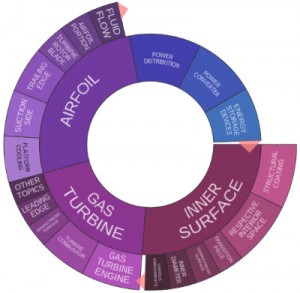 India, a $2.5 billion transaction involving 1,000 locomotives and services, as well as a contract of about $1 billion with the Saudi Electric Company for combined-cycle power plant technology.
India, a $2.5 billion transaction involving 1,000 locomotives and services, as well as a contract of about $1 billion with the Saudi Electric Company for combined-cycle power plant technology.
Through 2015, General Electric took the 14th spot among all companies earning patents from the U.S. Patent and Trademark Office with 1,757 patent grants during that year. This does represent a fairly sharp drop over GE’s 2014 patent totals, when it took in 2,293 U.S. patents and placed 10th among all companies in terms of patent totals. As of the second week in February, GE had taken in 230 patents from the USPTO, according to patent portfolio analysis tools available through Innography. As the text cluster here shows us, much of this innovation has centered upon gas turbines and airfoils.
GE’s Recently Issued Patents: From Efficient Transportation Systems to Natural Language Recognition
General Electric was recently issued patents for the protection of transportation system technologies, such as is reflected within U.S. Patent No. 9233697, entitled Method and System for Controlling a Vehicle System Factoring Mass Attributable to Weather. This patent protects a method of receiving weather data encountered or to be encountered by a vehicle in a vehicle system traveling on a trip along a route, determining a first estimated weight of the vehicle system based in part on the weather data and controlling movements of the vehicle system based in part on the first estimated weight of the vehicle system. This system is designed to improve the energy efficiency of vehicle systems, which can be affected when weather events add mass to a vehicle. More efficient methods for 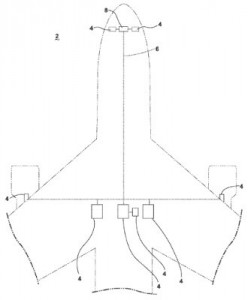 providing maintenance to an aircraft fleet is discussed within U.S. Patent No. 9251502, entitled Maintenance System for Aircraft Fleet and Method for Planning Maintenance. It discloses a maintenance system for a fleet of aircraft having a maintenance database storing a maintenance schedule with a list of routine maintenance procedures for an aircraft, a non-routine maintenance database having non-routine maintenance historical data for an aircraft, a health database having operation data for the aircraft and a planning module that queries the different databases to identify anticipated non-routine maintenance tasks having a threshold probability of occurrence based on historical fleet data and aircraft health data. This system is intended to improve airline efficiency in aircraft maintenance so as to alleviate unforeseen maintenance disruptions.
providing maintenance to an aircraft fleet is discussed within U.S. Patent No. 9251502, entitled Maintenance System for Aircraft Fleet and Method for Planning Maintenance. It discloses a maintenance system for a fleet of aircraft having a maintenance database storing a maintenance schedule with a list of routine maintenance procedures for an aircraft, a non-routine maintenance database having non-routine maintenance historical data for an aircraft, a health database having operation data for the aircraft and a planning module that queries the different databases to identify anticipated non-routine maintenance tasks having a threshold probability of occurrence based on historical fleet data and aircraft health data. This system is intended to improve airline efficiency in aircraft maintenance so as to alleviate unforeseen maintenance disruptions.
We were greatly intrigued by the nutritional analysis technology protected for General Electric through the issue of U.S. Patent No. 9244049, which is titled System and Method for Detection of Nutritional Parameters in Food Items. It claims a system for measuring nutritional parameters of food items and having a holding cavity, a sensor assembly with a transmitter antenna to transmit signals to a food item in the holding cavity and a receiver antenna that receives response signals from the food item, a switch coupled to each antenna for limiting interaction between electromagnetic waves in the holding cavity and sensor assembly and determine the nutritional parameters of the food item, and then a processing unit processing signals received by the receiver antenna to determine the food item’s nutritional parameters. This system serves as a nondestructive technique for measuring nutritional parameters of a food item in a microwave oven without causing arcing in the oven.
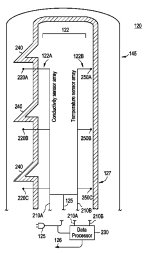 General Electric is also in the nuclear energy generation business thanks to its business alliance with Hitachi, known as GE Hitachi Nuclear Energy, and that company was recently issued U.S. Patent No. 9251920, entitled In-Situ and External Nuclear Reactor Severe Accident Temperature and Water Level Probes. It protects a system of monitoring a state of a core reactor included in a nuclear reactor and having an internal monitoring device located inside of the reactor core, the device including internal sensor arrays to measure conditions at different vertical regions of the reactor core to generate internal measurement data, provide measurement data to data lines of the nuclear reactor, measure conductivity at each vertical region; the system also includes a case containing the internal sensor arrays and having protrusions to mitigate coating of the conductivity sensors by molten materials, an external monitoring device located in the reactor structure, a transmitter that wirelessly transmits external measurement data outside the reactor core and a receiver station that receives external and internal measurement data to determine a state of the reactor core. This invention is designed to continue collecting information about the state of a nuclear reactor core even after a severe accident has occurred, addressing a shortcoming in the use of robots for monitoring conditions.
General Electric is also in the nuclear energy generation business thanks to its business alliance with Hitachi, known as GE Hitachi Nuclear Energy, and that company was recently issued U.S. Patent No. 9251920, entitled In-Situ and External Nuclear Reactor Severe Accident Temperature and Water Level Probes. It protects a system of monitoring a state of a core reactor included in a nuclear reactor and having an internal monitoring device located inside of the reactor core, the device including internal sensor arrays to measure conditions at different vertical regions of the reactor core to generate internal measurement data, provide measurement data to data lines of the nuclear reactor, measure conductivity at each vertical region; the system also includes a case containing the internal sensor arrays and having protrusions to mitigate coating of the conductivity sensors by molten materials, an external monitoring device located in the reactor structure, a transmitter that wirelessly transmits external measurement data outside the reactor core and a receiver station that receives external and internal measurement data to determine a state of the reactor core. This invention is designed to continue collecting information about the state of a nuclear reactor core even after a severe accident has occurred, addressing a shortcoming in the use of robots for monitoring conditions.
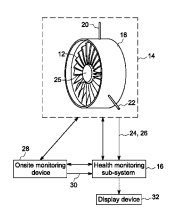 A monitoring system for assessing the health of rotor blades in a variety of assemblies is at the center of U.S. Patent No. 9250153, which is titled Methods and Systems for Monitoring Health of Blades. The system protected here includes a processing subsystem that determines preliminary voltages corresponding to a plurality of rotor blades by determining an ascending index value and a descending index value based on an index threshold value, determining an average value of the ascending index value and the descending index value and mapping the average value to a corresponding voltage value; the system also generates a plurality of clearance values by normalizing the preliminary voltages for effects of operational parameters and monitors health of the plurality of blades based on the clearance values. This system is capable of real-time prediction for cracks or fractures in rotor blades for airfoils used in turbines, engines, axial compressors and in other machinery.
A monitoring system for assessing the health of rotor blades in a variety of assemblies is at the center of U.S. Patent No. 9250153, which is titled Methods and Systems for Monitoring Health of Blades. The system protected here includes a processing subsystem that determines preliminary voltages corresponding to a plurality of rotor blades by determining an ascending index value and a descending index value based on an index threshold value, determining an average value of the ascending index value and the descending index value and mapping the average value to a corresponding voltage value; the system also generates a plurality of clearance values by normalizing the preliminary voltages for effects of operational parameters and monitors health of the plurality of blades based on the clearance values. This system is capable of real-time prediction for cracks or fractures in rotor blades for airfoils used in turbines, engines, axial compressors and in other machinery.
We thought readers might also be interested in exploring the natural language recognition technology which is the focus of U.S. Patent No. 9244909, entitled System and Method for Extracting Ontological Information from a Body of Text. It discloses a system for extracting ontological information from a body of text using an input module that receives a verb phrase, a parsing module that parses one or more sentences from the body of text into parse tree format to generate a set of parsed sentences, a named-entity-recognition module that identifies a subset of parsed sentences based partially on the occurrence of the verb phrase, identifies a subset of noun phrases from the subset of parsed sentences based partially on the grammatical relationship of each noun phrase to the verb phrase, classifies a first noun phrase as an entity and classifies a second noun phrase as a property; the system also has a concept-extraction module that identifies and outputs a conceptual relationship between an entity and a property to a display device for viewing by a user. This invention is designed to reduce the labor-intensive nature of creating dictionaries for all possible syntactical variations of technical concepts by eliminating the need to generating manually annotated data.
Patent Applications of Note: From Smarter Cooktops to High Efficiency Fuel Cell Systems
Our survey of GE’s recently filed patent applications showed us some very interesting intellectual properties in home appliances, such as is evidenced within U.S. Patent Application No. 20160002974, entitled LED Window Blinds with Warm Dimming Capability. It claims a window blind assembly having a slat member and an LED light strip coupled to the slat member in such a way that a light from the LED strip projects through the slat member. This innovation is a response to the continued emphasis upon incorporating natural light into a room in such a way that would support light therapy, which involves the gradual increase of light intensity in a 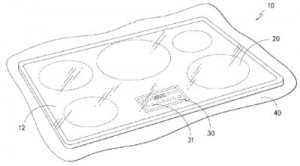 room similar to a sunrise sequence. A smart technology for home cooking ranges is featured within U.S. Patent Application No. 20160022086, which is titled Cooktop Appliances with Intelligent Response to Cooktop Audio. It claims a method for controlling a cooktop appliance by receiving an audio signal from acoustic sensors positioned at the cooktop, segmenting the audio signal into a plurality of samples, comparing an amplitude of the audio signal to a plurality of cooking event sounds which are previously stored in a memory, comparing a frequency of the audio signal to a frequency of each of the plurality of cooking event sounds, identifying a match between the audio signal and one of the cooking event sounds based on a comparison of the amplitudes and frequencies, and then performing operations associated with the cooking event associated with the matched cooking event sound. This system is intended to provide intelligent response to cooking events, such as the boiling of liquid, in such a way that overcomes issues with motion and temperature sensing systems. Smart technologies for laundry cleaning appliances are found at the center of U.S. Patent Application No. 20150368853, entitled Clothes Dryer with Improved Moisture Sensing and Wireless Data Transfer. It claims a clothes dryer having a cabinet, a drum rotatably mounted within the cabinet and defining a space for the receipt of clothes for drying, a controller that controls operation of the clothes dryer, a plurality of sensors positioned within the drum to output signals indicative of the amount of moisture contained within the clothes, a near field communication (NFC) tag positioned on an exterior surface of the drum that receives output signals from the sensors, a power supply connected to the sensors for providing electrical power and an NFC reader positioned exterior to the drum and positioned adjacent to the rotational path of the NFC tag. This system improves the contact frequency between sensors and clothes in a drying machine for more accurate readings of moisture levels in clothes being dried.
room similar to a sunrise sequence. A smart technology for home cooking ranges is featured within U.S. Patent Application No. 20160022086, which is titled Cooktop Appliances with Intelligent Response to Cooktop Audio. It claims a method for controlling a cooktop appliance by receiving an audio signal from acoustic sensors positioned at the cooktop, segmenting the audio signal into a plurality of samples, comparing an amplitude of the audio signal to a plurality of cooking event sounds which are previously stored in a memory, comparing a frequency of the audio signal to a frequency of each of the plurality of cooking event sounds, identifying a match between the audio signal and one of the cooking event sounds based on a comparison of the amplitudes and frequencies, and then performing operations associated with the cooking event associated with the matched cooking event sound. This system is intended to provide intelligent response to cooking events, such as the boiling of liquid, in such a way that overcomes issues with motion and temperature sensing systems. Smart technologies for laundry cleaning appliances are found at the center of U.S. Patent Application No. 20150368853, entitled Clothes Dryer with Improved Moisture Sensing and Wireless Data Transfer. It claims a clothes dryer having a cabinet, a drum rotatably mounted within the cabinet and defining a space for the receipt of clothes for drying, a controller that controls operation of the clothes dryer, a plurality of sensors positioned within the drum to output signals indicative of the amount of moisture contained within the clothes, a near field communication (NFC) tag positioned on an exterior surface of the drum that receives output signals from the sensors, a power supply connected to the sensors for providing electrical power and an NFC reader positioned exterior to the drum and positioned adjacent to the rotational path of the NFC tag. This system improves the contact frequency between sensors and clothes in a drying machine for more accurate readings of moisture levels in clothes being dried.
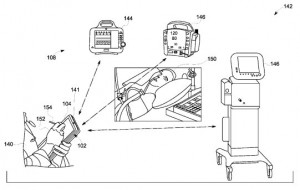 More medical and healthcare innovations have been in GE’s recent focus, as we can see from the filing of U.S. Patent Application No. 20160007937, entitled Systems and Methods for Wirelessly Controlling Medical Devices. It would protect a method for controlling a medical device from a portable electronic device by establishing bi-directional communication between a portable electronic device and a select medical device from a plurality of medical devices, displaying a graphical user interface (GUI) including selectable elements on a display of the portable electronic device, adjusting a setting of the select medical device based on a selection of user selectable elements from the portable electronic device and receiving feedback from the select medical device in response to the adjusted setting. This wireless method for adjusting settings on medical devices is expected to reduce the occurrence of hospital borne infections that can be passed along to patients by doctors touching devices by hand. Better communication among employees in a hospital or other healthcare environment is discussed within U.S. Patent Application No. 20160028827, filed under the title Intelligent Mediation of Messages in a Healthcare Product Integration Platform. It discloses a method to provision an interface for mediation of messages in a product integration platform by identifying a target healthcare system which is a destination for message routing from a source healthcare system, identifying configuration rules and protocol requirements for the target healthcare system and comparing to the source healthcare system, defining a configuration for the interface associated with the target healthcare system based on the configuration rules, protocol requirements and relationship between the target and source healthcare systems, constructing the target healthcare system interface route, creating an interface factory to return implementations of an interface route and configuration, passing the interface factory content to an interface control channel, loading a concrete implementation of the interface route and configuration, initializing the interface route and instantiating interface endpoints and processors to enable communication between the source and target healthcare systems via the interface route. This innovation is designed to address issues when healthcare information systems which utilize different message exchange standards find it difficult to communicate records with each other.
More medical and healthcare innovations have been in GE’s recent focus, as we can see from the filing of U.S. Patent Application No. 20160007937, entitled Systems and Methods for Wirelessly Controlling Medical Devices. It would protect a method for controlling a medical device from a portable electronic device by establishing bi-directional communication between a portable electronic device and a select medical device from a plurality of medical devices, displaying a graphical user interface (GUI) including selectable elements on a display of the portable electronic device, adjusting a setting of the select medical device based on a selection of user selectable elements from the portable electronic device and receiving feedback from the select medical device in response to the adjusted setting. This wireless method for adjusting settings on medical devices is expected to reduce the occurrence of hospital borne infections that can be passed along to patients by doctors touching devices by hand. Better communication among employees in a hospital or other healthcare environment is discussed within U.S. Patent Application No. 20160028827, filed under the title Intelligent Mediation of Messages in a Healthcare Product Integration Platform. It discloses a method to provision an interface for mediation of messages in a product integration platform by identifying a target healthcare system which is a destination for message routing from a source healthcare system, identifying configuration rules and protocol requirements for the target healthcare system and comparing to the source healthcare system, defining a configuration for the interface associated with the target healthcare system based on the configuration rules, protocol requirements and relationship between the target and source healthcare systems, constructing the target healthcare system interface route, creating an interface factory to return implementations of an interface route and configuration, passing the interface factory content to an interface control channel, loading a concrete implementation of the interface route and configuration, initializing the interface route and instantiating interface endpoints and processors to enable communication between the source and target healthcare systems via the interface route. This innovation is designed to address issues when healthcare information systems which utilize different message exchange standards find it difficult to communicate records with each other.
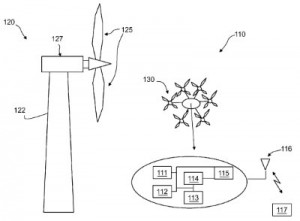 Another technology for the monitoring of rotor blade health, this one utilizing a much different inspection mechanism, is detailed within U.S. Patent Application No. 20160017866, which is titled Wind Tower and Wind Farm Inspections via Unmanned Aircraft Systems. This would protect an unmanned aircraft system (UAS) to inspect equipment and having a scanner that obtains images of the equipment, a memory device that stores information for the UAS, a processor that determines a real-time flight path based on the images and stored information and a camera mounted on the UAS that obtains camera images of the equipment as the UAS traverses the real-time flight path. This improves the accessibility of wind tower components for inspection without resorting to time-consuming and costly procedures such as lowering turbine parts to the ground for inspection.
Another technology for the monitoring of rotor blade health, this one utilizing a much different inspection mechanism, is detailed within U.S. Patent Application No. 20160017866, which is titled Wind Tower and Wind Farm Inspections via Unmanned Aircraft Systems. This would protect an unmanned aircraft system (UAS) to inspect equipment and having a scanner that obtains images of the equipment, a memory device that stores information for the UAS, a processor that determines a real-time flight path based on the images and stored information and a camera mounted on the UAS that obtains camera images of the equipment as the UAS traverses the real-time flight path. This improves the accessibility of wind tower components for inspection without resorting to time-consuming and costly procedures such as lowering turbine parts to the ground for inspection.
Finally, we felt like taking some time to explore a novel configuration for a power generation plant utilizing fuel cells which is laid out within U.S. Patent Application No. 20160006065, entitled Power Generation Systems and Methods Utilizing Cascaded Fuel Cells. The power generation system that would be protected here includes a first fuel cell that generates a first anode tail gas stream and a first cathode tail gas stream, a fuel reformer located downstream of the first fuel cell that mixes the first anode tail gas with a reformer fuel stream to form a reformed stream, a splitting mechanism that splits the reformed stream into a first portion and a second portion, a fuel path configured to circulate the reformed stream’s first portion to an anode inlet of the first fuel cell to generate a first electric power and a second fuel cell that receives the reformed stream’s second portion to generate a second electric power. This invention solves a need for more efficient power generation systems incorporating fuel cells to achieve a conversion efficiency of greater than 50 percent, which is currently a drawback preventing wide-scale implementation.

![[IPWatchdog Logo]](https://ipwatchdog.com/wp-content/themes/IPWatchdog%20-%202023/assets/images/temp/logo-small@2x.png)

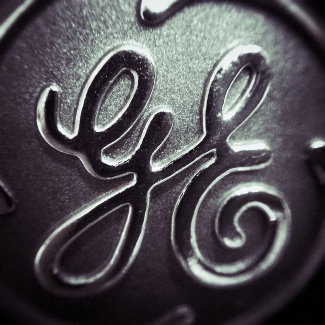
![[[Advertisement]]](https://ipwatchdog.com/wp-content/uploads/2024/04/Patent-Litigation-2024-banner-938x313-1.jpeg)
![[Advertisement]](https://ipwatchdog.com/wp-content/uploads/2024/04/Patent-Litigation-Masters-2024-sidebar-700x500-1.jpg)

![[Advertisement]](https://ipwatchdog.com/wp-content/uploads/2021/12/WEBINAR-336-x-280-px.png)
![[Advertisement]](https://ipwatchdog.com/wp-content/uploads/2021/12/2021-Patent-Practice-on-Demand-recorded-Feb-2021-336-x-280.jpg)
![[Advertisement]](https://ipwatchdog.com/wp-content/uploads/2021/12/Ad-4-The-Invent-Patent-System™.png)






Join the Discussion
One comment so far.
Benny
February 14, 2016 05:09 amNote that GE took over Alstoms power division.
Alstoms locomotive and railway transport division was taken over by Vossloh of Germany